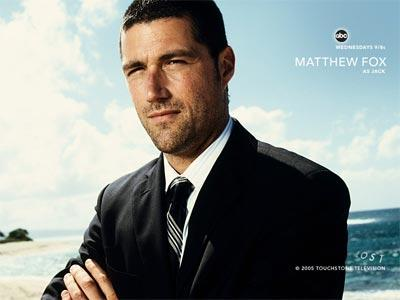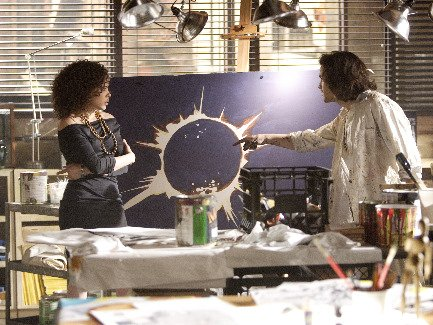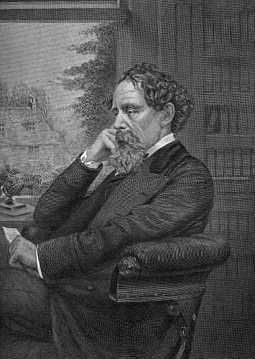The Simultaneous Dawning and Twilight of Broadcast Network Narrative
by: Craig Jacobsen / Mesa Community College

In my last article for Flow (Vol.5 Issue 1) I made the case that broadcast network television seems to be fulfilling its potential as a medium for sophisticated narratives. While in that article I was looking mainly at the intellectually engagement engendered by structural complexity, I would add that truly sophisticated narratives are emotionally engaging as well. And though perhaps it goes without saying, an intellectually and emotionally engaging narrative takes time to unfold. Certainly short narratives can do both, but extended narratives have substantially greater opportunities for complexity. So it would seem that television series as a format ought to have an edge over feature films. Even unusually long films or film trilogies or series have far less storytelling time than a season of hour-long episodes, much less than a show that has the luxury of multiple seasons to spin out a complicated plot and develop complex characters. Despite this apparent advantage, though, broadcast network television has seldom fulfilled its potential.
While we might point to a number of causes for this failure, certainly one limiting factor is television's episodic nature. Presenting a narrative in brief installments with long periods between limits an audience's ability to recall the intricacies of a convoluted plot or recognize subtle connections between earlier and later episodes. Emotional intensity is difficult to maintain over time. Episodic narratives demand much from their audiences might be said to have a high degree of “seriality,” the extent to which understanding one installment of a narrative depends upon familiarity with preceding installments. Low seriality narratives allow an audience to enter at any episode without feeling too lost. In such shows developments across multiple episodes are small of peripheral, and don't limit the audience's enjoyment of a particular installment (think of a police procedural in which your knowledge of a character's private life has little bearing on whether you can enjoy that week's mystery). The most interesting of the shows that I pointed to in my last article (24, Lost) and new this season (Daybreak, Heroes) are high seriality programming. It is difficult to enter the narrative in the middle without feeling confused. This characteristic can present a significant barrier to gaining new viewers, and it points to broadcast television's inherent limitations as a narrative medium.

As a point of comparison, the novel is far better suited to convey sophisticated narrative. It not only offers the scope necessary to develop complex plots and engaging characters, it allows its audience a substantial degree of control over the narrative delivery that broadcast television almost completely lacks without supplemental technologies. Novel readers can engage the narrative when it is convenient, and when they are most prepared to devote intellectual and emotional resources to it. They can return to earlier parts of the narrative and control how much time passes between narrative installments. Networks are attempting to overcome some of the limits of broadcast through downloadable episodes, online synopses, and “What's happened up to now” clip shows. While these measures may help to offset the demands put on audiences by sophisticated high seriality shows, they also highlight the inadequacies of the medium and demonstrate the networks' awareness that such shows stretch (or even surpass) the limits of what the medium can sustain unaided.
Watching a season of a sophisticated high seriality program on DVD makes broadcast's deficiencies even more apparent. When one can exercise an almost novelistic control over narrative delivery (watching multiple episodes in a row, watching when one wants, freeze frame, slow motion, etc.), the experience is notably richer. One is able to appreciate the intricacies and subtleties of genuinely sophisticated narrative, and to engage more deeply with characters' emotional lives.
Despite the resources networks are putting into supporting high seriality shows through downloadable episodes and website synopses, neither measure seems likely to sustain sophisticated narrative on broadcast television. Synopses necessarily simplify complex plots and reduce emotional engagement, serving best as occasional placeholders to keep regular viewers from falling behind. Downloading episodes allows an increased level of audience control, but of course then we're no longer talking about broadcast television, but a hybrid medium. Such a hybrid raises questions about the relationship between the two media (television seems to need the internet more than the reverse). In an age of expanding television screens and home theatres, watching an episode on the computer may not be attractive. While it is possible to port such episodes from computer to television, that's an inconvenience. In an age of unprecedented narrative availability, such inconveniences can be powerful dissuaders. Why put up with any inconvenience when other media are clamoring for attention?

It's perhaps sad to think, but U.S. broadcast network television's maturity as a medium for sophisticated narrative may be short-lived. Such programming requires investments of audience time and energy that seem increasingly unlikely to occur on any schedule other than the audience's own. If that is indeed the case, then networks may be constrained to offering low sophistication/low seriality programming. It isn't hard to imagine a future in which broadcasting serves the role of advertising and secondary revenue stream for the primary medium: complete seasons of episodes packed for sale on DVD or for download. If such an evolution seems improbable, nineteenth century literature offers a model. Writers like Charles Dickens wrote serialized narratives that were then collected and published as novels. While serialized literature has faded to become a relative rarity, the novel as a form dominates print narrative. Given the sophisticated narrative potential of collected episodes divorced from the constraints of high seriality narrative, perhaps such a future is to be anticipated rather than dreaded.
Image Credits:
1. Jack Shephard, Lost
2. Simone Deveaux and Isaac Mendez, Heroes
3. Charles Dickens
Please feel free to comment.
And in the mean time…
Craig’s assessment of the current state of television is dead on, it seems to me, especially if one takes the particularly long view he does: I willingly anticipate a future in which purchasing complex and sophisticated visual narratives comprising scores of hours of programming is the marquee event for consumers and network television has faded into the background.
Of course, in the near future, the massive economic and cultural power of the networks (both broadcast and cable) seems likely to forestall any quiet going into that good night.
So I wonder what others might prognosticate for the _near_ future, as we see the ascendance of both sophistication in long-form visual narrative AND multiplication of channels of delivery (especially via the internet, but also in other popular forms such as mail subscription services like Netflix).
What will happen to broadcast television between now and Jacobsen’s future? Will it atrophy slowly, with fewer and fewer new series and more and more paid programming? Will we see a sudden cascading chain of companies sell off their assets and move into other arenas of media production, kicked off by a high profile sale by a heavyweight like NBC? Or will it hang on in a different or altered form for decades, the way radio has done?
A note on Heroes
I think this show illustrates well some of the issues raised in this article by Craig, in that Heroes is highly serial programming, yet it’s not relatively all that complex when compared either to other serial shows (say on HBO) or other media (say comics or novels). As a sometimes reader of graphic novels, and a fan of a few franchise narratives, I recognize many patterns of superhero storytelling within Heroes, and have even complained that Heroes can suffer from 1. hitting you over the head with reminders of the narrative threads (as if to sell constantly its complexity) and 2. being too derivative of other narrative franchises. That said, I enjoy the show; there are enough surprises to the twists to keep me interested despite the above-mentioned detractors. This is not the same for my boyfriend, who, I’m afraid, is mostly still watching the show because I am. He is frequently quite bored, and laments that he can see the so-called “twists” coming from two miles away. While this is anecdotal, it does point to the way that network shows negotiate narrative “complexity” in relative not absolute ways, and perhaps the limits of seriality in contemporary network programming.
Don’t underestimate the pleasure of anticipation
While I agree with the basic idea you lay out here, I would caution from simple declarations of the pleasures of long-form narratives as being strictly “novelistic.” There is a substantial and legitimate pleasure to be found within the gaps between episodes of a serialized program, as viewers spend energy contemplating relationships, fretting about cliffhangers, and postulating theories. The pleasure of anticipation can be tinged with pain, but I think a simple hierarchy valuing the ability to consume narrative at a viewer’s pace as inherently “richer” ignores an important aspect of storytelling gaps that many shows (like 24, Alias, and Lost) structure into their narrative form.
“Richer”
I would agree that the episodic nature of serialized narrative is very much about the gaps. When I said “richer” (always a loaded term), though, I wasn’t referring to those gaps, but to the kind of control afforded to non-broadcast media: fast-forward, freeze-frame, rewind, etc. I would argue that these are, in fact, often the activities that take place in those gaps between episodes. The recording of the broadcast allows for manipulation that the broadcast itself does not, allowing for the closer analysis that fuels online discussions amongst fans.
Soap Operas
Craig, really interesting account, and I think you are right to consider how the ability to analyze episodes through DVD viewing has an affect on viewer enjoyment of complex television.
The question is how much should the long tail of the DVDs be taken into account when thinking about the initial broadcast. Many critics and journalists have been pointing out this fall how much long-term profit may be sacrificed in cancelling these complex series only a few episodes in.
I’m interested in this essay, though, in relation to daytime serial dramas. I’m amazed at how almost every critic and scholar who writes about complexity on television seems to ignore the narrative complexity of the nine daytime series that are currently on the air, especially considering how these texts have been able to for decades to have 10 or 12 intertwining storylines airing simultaneously with 30 or 40 characters that audiences have been able to keep up with.
Soaps may have dropped in popularity since the genre’s late 70s and early 80s zenith, but daytime programming still commands several million viewers every day.
I think you are right that the gaps between programs causes a problem for remembering all the plot points necessary for enjoying the seriality of shows, but the 22 or 24-episode structure of primetime television, with several months off between seasons and a week between episodes, is not a nature of episodic storytelling but rather the way series are currently developed and aired in primetime.
Daytime soaps, with five episodes a week and no off season, provide an episodic alternative that has been successful for decades and is not even currently available on DVD. Just worth taking into further consideration.
I wrote further about this phenomenon on MIT’s Convergence Culture Consortium blog, in relation to your piece. That response is available here.
While we might point to a number of causes for this failure, certainly one limiting factor is television’s episodic nature. Presenting a narrative in brief installments with long periods between limits an audience’s ability to recall the intricacies of a convoluted plot or recognize subtle connections between earlier and later episodes.
Soaps
Sam,Thanks for the thoughts and the links. I thought about soaps as serialized broadcast narrative, but as you note above, there’s a real difference between the broadcasting schedule of soaps and that of high seriality evening programming. The soaps have worked out a number of narrative strategies that simply wouldn’t work with a week (or often more) between installments. And even the soaps have long had supplemental media in the form of print “digest” versions that help viewers (and even non-viewers) keep up. I don’t know the history of such publications, but I think I’ll try to find out. It calls into question just how long television has been a hybridized narrative medium, dependant upon supplemental technologies to effectively maintain sophisticated ongoing narratives.
Pingback: FlowTV » Film is the New Low, Television the New High: Some Ideas About Time and Narrative Conservatisms